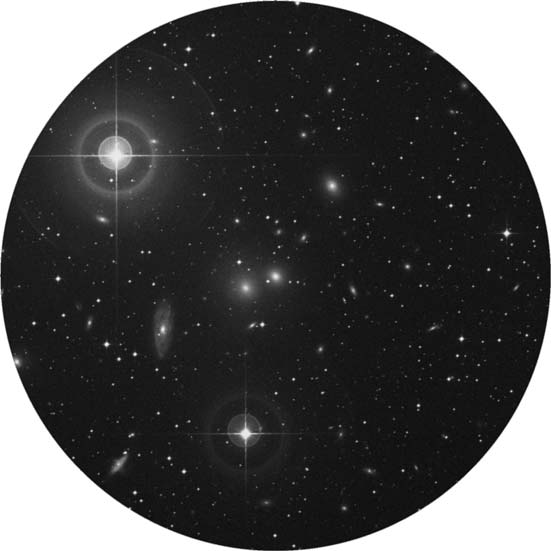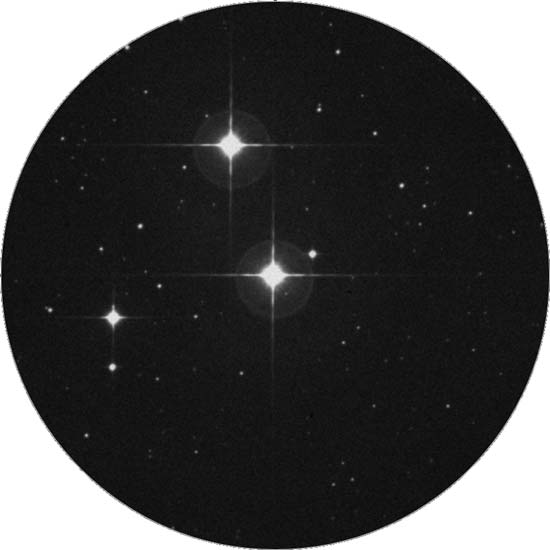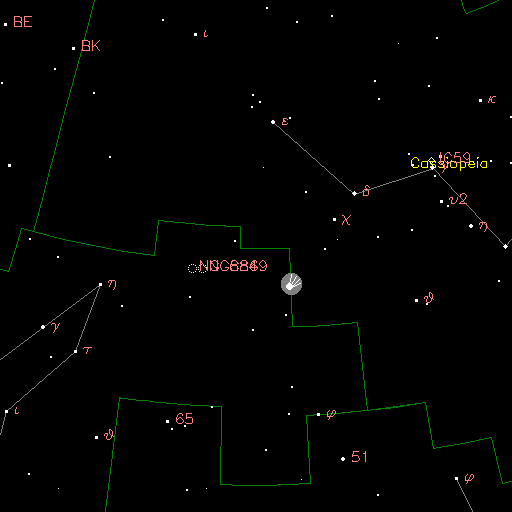Greetings, fellow SkyWatchers! Are you ready for a much darker weekend? I’m off to NEAF, but while I’m gone, I hope you’ll take advantage of the weekend to enjoy a little galaxy hunting and a minor meteor shower? If not, how about a great variable star – or the “Eight Burst Planetary”! Finding Comet Yi-SWAN will be easy Sunday night, but be sure to set your alarm early for Sunday morning, because there’s something very worth getting up to see…
Friday, April 17, 2009 – On this date in 1976, the joint German and NASA probe Helios 2 came closer to the Sun than any other spacecraft so far. One of its most important contributions helped us to understand the nature of gamma ray bursts.
Let’s begin our evening with a burst of galaxies in Hydra about 5 degrees due west of the Xi pairing (RA 10 36 35 Dec –27 31 03). Centermost are two fairly easy to spot ellipticals, NGC 3309 and NGC 3311, accompanied by spiral NGC 3322. Far fainter are other group members, such as NGC 3316 and NGC 3314 to the east of the 7th magnitude star; and NGC 3305 north of the 5th magnitude star. Although such galaxy clusters as the NGC 3308 region are not for everyone, studying those very faint fuzzies is a rewarding experience for those with large aperture telescopes.
Now let’s kick back and watch the peak of the Sigma Leonid meteor shower. The radiant is traditionally located on the Leo–Virgo border but has migrated to Virgo in recent years. Thanks to Jupiter’s gravity, this shower may eventually become part of the Virginid Complex as well. The fall rate is very low at around 1–2 per hour.
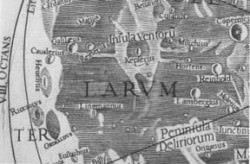 While we’re watching, let’s talk about Giovanni Riccioli, who was born on this date in 1598. Italian astronomer Riccioli was the first to observe a double star in the year 1650. . .and it was one you’ve probably observed, too – Mizar! He also watched shadow transits on Jupiter and did many lunar studies, including mapping. If you’ve ever wondered who gave such fanciful names to the lunar maria, or tagged the major craters with names of famous scientists and philosophers, now you know that it was Riccioli!
While we’re watching, let’s talk about Giovanni Riccioli, who was born on this date in 1598. Italian astronomer Riccioli was the first to observe a double star in the year 1650. . .and it was one you’ve probably observed, too – Mizar! He also watched shadow transits on Jupiter and did many lunar studies, including mapping. If you’ve ever wondered who gave such fanciful names to the lunar maria, or tagged the major craters with names of famous scientists and philosophers, now you know that it was Riccioli!
Saturday, April 18, 2009 – Today let’s take a look at the 1838 birth of Paul-Emile Lecoq de Boisbaudran on this date, who improved the field of spectroscopic identification and spent many years scanning minerals for undiscovered spectral lines. His persistence finally netted him the discovery of three new elements!
Tonight let’s start out ‘‘elemental’’ as we use binoculars to identify R Corvi , located almost dead center in the Corvus ‘‘rectangle’’ and to the southwest of its companion field stars. Although variable stars are not every one’s cup of tea, R (RA 12 19 37 Dec –19 15 21) has changed greatly in a little less than a year—from magnitude 8 to as faint as magnitude 14! This Mira-type star should be nearing its maximum, so be sure to try it before it fades away…
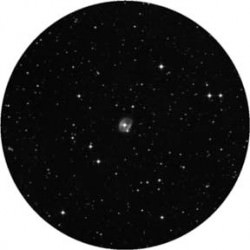 Now let’s head out in search of an object that is one royal navigation pain for the Northern Hemisphere but makes up for it in beauty. Start with the southernmost star in Crater, Beta. If you have difficulty identifying it, it’s the brightest star east of the Corvus rectangle. Now hop a little more than a fist-width southeast to reddish Alpha Antilae. Less than a fist-width below, you will see a dim 6th magnitude star, which may require binoculars in the high north. Another binocular field further southwest and about 4 degrees northwest of Q Velorum is our object,NGC 3132 (RA 10 07 01 Dec –40 26 11). If you still have no luck, try waiting until Regulus has reached your meridian and head fully 52 degrees south. More commonly known as the ‘‘Southern Ring’’ or the ‘‘Eight Burst Planetary,’’ this gem is brighter than the northern ‘‘Ring’’ (M57) and definitely shows more details. Able to be captured in even small instruments, larger ones will reveal a series of overlapping shells, giving this unusual nebula its name.
Now let’s head out in search of an object that is one royal navigation pain for the Northern Hemisphere but makes up for it in beauty. Start with the southernmost star in Crater, Beta. If you have difficulty identifying it, it’s the brightest star east of the Corvus rectangle. Now hop a little more than a fist-width southeast to reddish Alpha Antilae. Less than a fist-width below, you will see a dim 6th magnitude star, which may require binoculars in the high north. Another binocular field further southwest and about 4 degrees northwest of Q Velorum is our object,NGC 3132 (RA 10 07 01 Dec –40 26 11). If you still have no luck, try waiting until Regulus has reached your meridian and head fully 52 degrees south. More commonly known as the ‘‘Southern Ring’’ or the ‘‘Eight Burst Planetary,’’ this gem is brighter than the northern ‘‘Ring’’ (M57) and definitely shows more details. Able to be captured in even small instruments, larger ones will reveal a series of overlapping shells, giving this unusual nebula its name.
Sunday, April 19, 2009 – Don’t sleep in this morning! It’s worth getting up early to see Jupiter and the Moon only about a fingerwidth apart in the morning sky. If you check out the pair in binoculars, you’ll notice faint little Neptune is also a part of this early morning trio!
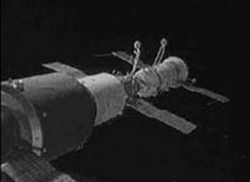 On this date in 1971, the world’s first space station was launched, the Soviet research vessel Salyut 1. Six weeks later, Soyuz 11 and its crew of three docked with the station, but a mechanism failed, denying them entry. The crew conducted their experiments, but were sadly lost when their re-entry module separated from the return spacecraft and depressurized. Although the initial phase of Salyut 1 seemed doomed, the mission continued to enjoy success through the early 1980s and paved the way for Mir.
On this date in 1971, the world’s first space station was launched, the Soviet research vessel Salyut 1. Six weeks later, Soyuz 11 and its crew of three docked with the station, but a mechanism failed, denying them entry. The crew conducted their experiments, but were sadly lost when their re-entry module separated from the return spacecraft and depressurized. Although the initial phase of Salyut 1 seemed doomed, the mission continued to enjoy success through the early 1980s and paved the way for Mir.
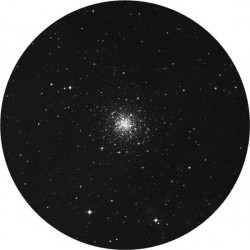 Now, tonight let’s try picking up a globular cluster in Hydra that is located about three finger-widths southeast of Beta Corvi and just a breath northeast of the double star A8612—namely, M68. This class X globular cluster was discovered in 1780 by Charles Messier, and first resolved into individual stars by William Herschel in 1786. At a distance of approximately 33,000 light-years, it contains at least 2,000 stars, including 250 giants and 42 variables. It will show as a faint, round glow in binoculars, and small telescopes will perceive individual members. Large telescopes will fully resolve this small globular to the core!
Now, tonight let’s try picking up a globular cluster in Hydra that is located about three finger-widths southeast of Beta Corvi and just a breath northeast of the double star A8612—namely, M68. This class X globular cluster was discovered in 1780 by Charles Messier, and first resolved into individual stars by William Herschel in 1786. At a distance of approximately 33,000 light-years, it contains at least 2,000 stars, including 250 giants and 42 variables. It will show as a faint, round glow in binoculars, and small telescopes will perceive individual members. Large telescopes will fully resolve this small globular to the core!
If you managed M68, and can find the famous Perseus “Double Cluster”, then surely you can tackle Comet C/2009 Yi-SWAN! Need a chart? Then here it is…
Until next week? Dreams really do come true when you keep on reaching for the stars!
This week’s awesome images (in order of appearance) are: NGC 3308 region (credit—Palomar Observatory, courtesy of Caltech), Map showing Riccioli features (historical image), R Corvi and NGC 3132 (credit—Palomar Observatory, courtesy of Caltech), Salyut 1 (credit—NASA) and M68 (credit—Palomar Observatory, courtesy of Caltech. We thank you so much!


